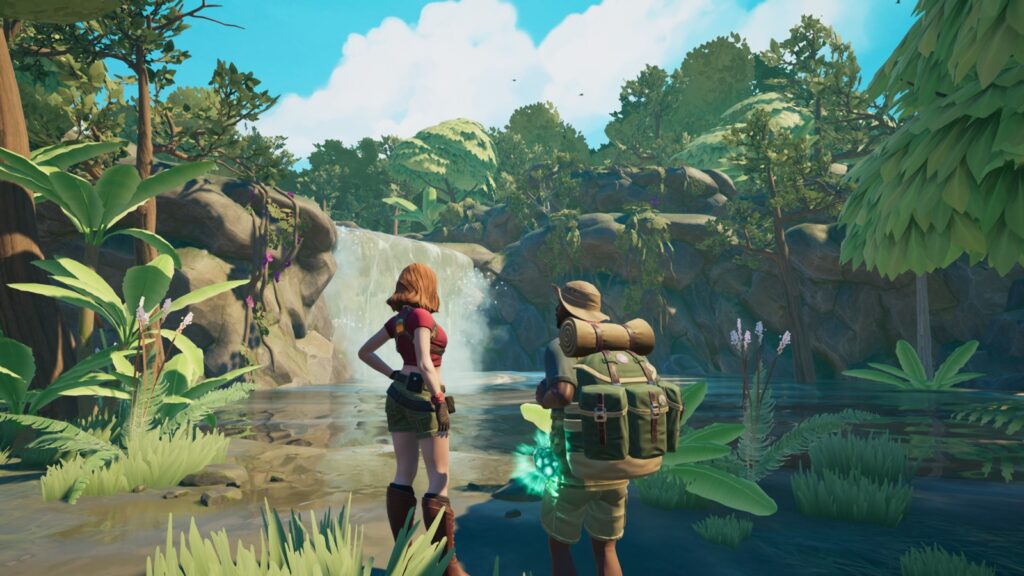Graphics play a crucial role in creating an immersive gaming experience. 2D graphics, which are flat images, are simple to create using specialized software and are ideal for low-budget and mobile games. However, they lack the level of detail and immersion that 3D graphics offer. 3D graphics use three axes to create an illusion of depth and perspective, and the creation process is more complex, involving modeling, texturing, rigging, and animating. Many games today use a combination of both 2D and 3D graphics to create a unique look and feel, enhancing the overall player experience.
Creating the Illusion: How 2D and 3D Graphics Are Used in Gaming
Video games are a form of digital entertainment that have become a part of everyday life. They offer an escape into fantastical worlds, exciting characters, and thrilling adventures. But what goes into making these immersive virtual experiences? One key component is graphics, which is the visual representation of the game world and its characters. In this article, we’ll explore how 2D and 3D graphics are used in gaming and the process of creating them.
2D Graphics in Gaming
2D graphics are flat images that are used to create a game’s characters, environments, and objects. They have been used in video games since the industry’s beginning, and continue to be used today to create games with a classic look.
The creation process for 2D graphics generally involves two steps: concept art and digital art. During the concept art phase, artists sketch out rough ideas for the game’s characters, landscapes, and other elements. Once the concept is approved, digital artists use specialized software such as Adobe Photoshop to create high-resolution versions of the concepts. These images are then imported into the game engine and pieced together to create the game world.
One advantage of 2D graphics is that they are relatively simple to create and require minimal hardware to run, making them ideal for mobile games or low-budget indie games. However, they do have limitations in terms of the complexity of the game world and the level of detail that can be included. 2D graphics also lack the depth and immersion that can be achieved with 3D graphics.
3D Graphics in Gaming
3D graphics are created using three axes – x, y, and z – to give the illusion of depth and perspective. They are used to create game worlds that are more immersive and realistic, and are now the standard for many of the industry’s biggest titles. The creation process for 3D graphics is more complex than 2D graphics and involves specialized software such as Autodesk Maya or Blender.
The process involves modeling, texturing, rigging, and animating. First, the modeler creates a 3D mesh of the game object, which is a series of interconnected polygons that create the object’s shape. The mesh is then textured using images of the object’s surface, which are mapped onto the mesh’s polygons. Once the object is textured, it is rigged, or given a digital skeleton, which allows it to be animated. Finally, the animator creates movements for the character or object, which are then brought into the game engine.
Game developers can also use various techniques to enhance the quality of 3D graphics, such as lighting and shading effects. These can bring a game world to life and create a more immersive experience for the player.
The Integration of 2D and 3D Graphics
While 3D graphics may seem like the obvious choice for game development, 2D graphics still have their place in the industry. In fact, many games today use a combination of the two to create a unique look and feel. For example, a game may feature 2D characters and environments, but use 3D graphics for special effects or cut scenes. This blend of graphics styles can help define a game’s identity and make it stand out in a crowded market.
One example of a game that uses a combination of 2D and 3D graphics is Hollow Knight, a popular indie game. The game’s characters and environments are all created using 2D graphics, but special effects such as particle systems and lighting are created using 3D graphics. This combination creates a unique look that fits the game’s dark and moody atmosphere.
Conclusion
The graphics of a video game play a crucial role in creating an immersive and engaging experience for players. Whether it’s 2D or 3D graphics, each has its strengths and weaknesses, and each contributes to the overall look and feel of a game. The creation process for both types of graphics is complex and requires a skilled team of artists and developers. As games continue to evolve and push the boundaries of technology, we can expect to see even more stunning and immersive graphics in the future.
